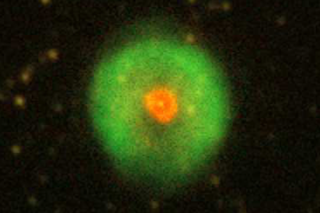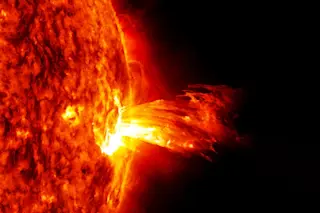Astronomers watched a dying star, dubbed HuBi 1, get a brief second lease on life. (Credit: Nature Astronomy (2018). DOI: 10.1038/s41550-018-0551-8) Often when stars die, they go out with a bang in the form of a supernova, leaving a small, dim stellar corpse in the center of a gaseous nebula. But sometimes, these leftover stars can get a new spark of life. Astronomers used a telescope in the Canary Islands to watch a dying star, dubbed HuBi 1, get a brief second wind. And as they observed, they noticed a strange side effect: a shockwave sent from the fading star struck the surrounding gas in a way that made it appear “inside out.” The discovery, published this week in Nature Astronomy, marks the first time astronomers have seen such behavior from a sun-sized star. And it hints at how our own star may perish. When a star like our sun ...
Astronomers Watch a Dying Star Enjoy One Last Spark of Life
Astronomers discovered HuBi 1, a dying star that experienced a brief second wind, altering its surroundings dramatically.
More on Discover
Stay Curious
SubscribeTo The Magazine
Save up to 40% off the cover price when you subscribe to Discover magazine.
Subscribe













